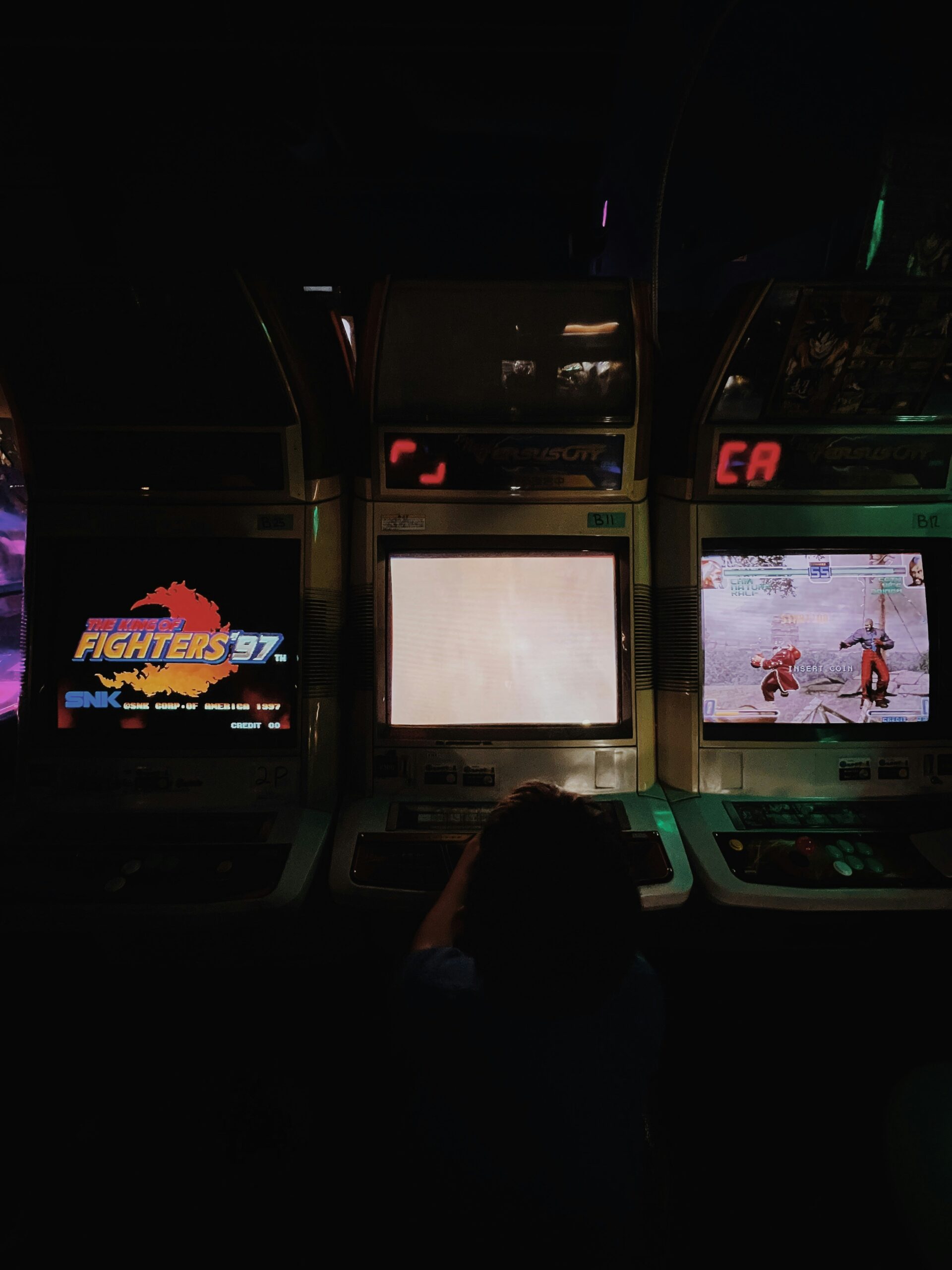In the vast and vibrant world of video games, Japan has carved out an indomitable niche that has captivated the hearts of players globally. Among its most significant contributions is the beat ’em up genre—a style of game that emphasizes hand-to-hand combat against a succession of opponents. From the neon-lit arcades of Tokyo to the living rooms of gamers worldwide, Japan’s beat ’em ups have not only defined but also revolutionized the gaming landscape. This article delves into the triumphs of Japanese beat ’em ups, charting their rise from arcade obscurity to global gaming phenomena.
The Rise of Japan’s Beat ’em Ups
The genesis of Japan’s beat ’em up genre can be traced back to the early 1980s, when titles like "Kung-Fu Master" began to emerge. These games introduced players to side-scrolling combat, a concept that would become the backbone of the genre. Developers quickly recognized the potential for immersive storytelling through the medium of fistfights and martial arts duels. Companies such as Capcom and SEGA were at the forefront, experimenting with gameplay mechanics and narratives that captivated a generation. It wasn’t long before beat ’em ups became a staple in arcades across Japan, a testament to their widespread appeal and the beginning of a gaming revolution.
From Arcades to Consoles: A Seamless Transition
As the 1980s progressed, the gaming industry witnessed a pivotal shift from arcades to home consoles. Japanese developers adeptly navigated this transition, porting popular arcade beat ’em ups to systems like the Nintendo Entertainment System (NES) and the SEGA Genesis. This move not only expanded the genre’s audience but also allowed for deeper, more complex game designs. Franchises such as "Final Fight" and "Streets of Rage" found new life on consoles, offering players the thrill of arcade-style combat from the comfort of their homes. The success of these transitions underscored Japan’s role as a leader in the gaming industry, adept at evolving with technological advancements.
The Golden Era: 1980s and 1990s Classics
The late 1980s to the early 1990s is often heralded as the golden era of beat ’em ups, a period when Japanese developers unleashed a flurry of iconic titles. "Double Dragon" and "River City Ransom" broke new ground with their cooperative gameplay and RPG elements, respectively. However, it was Capcom’s "Final Fight" and SEGA’s "Streets of Rage" series that truly defined the era. These games offered a blend of compelling narratives, diverse character rosters, and innovative combat systems that set new standards for the genre. Their success not only solidified the beat ’em up’s place in gaming history but also showcased Japan’s ability to create experiences that resonated globally.
Street Fighter II: The World Takes Notice
While not a traditional beat ’em up, Capcom’s "Street Fighter II" revolutionized the fighting game landscape upon its release in 1991. Its competitive gameplay, diverse cast of characters, and complex combat mechanics captivated a worldwide audience. "Street Fighter II" was instrumental in popularizing the concept of one-on-one fighting games, influencing countless titles that followed. Its global success underscored the universal appeal of Japan’s game design philosophy, blending skill-based gameplay with engaging character narratives. The game’s legacy is a testament to the profound impact Japanese developers have had on the global gaming scene.
Final Fight and Streets of Rage: Urban Chaos
"Final Fight" and "Streets of Rage" epitomized the urban chaos aesthetic that became synonymous with the beat ’em up genre. Set against the backdrop of crime-ridden cities, these games plunged players into the shoes of vigilantes fighting against overwhelming odds. The gritty settings, combined with pumping soundtracks and fluid combat systems, offered an immersive experience that was both exhilarating and empowering. These titles not only raised the bar for narrative depth in video games but also showcased the ability of Japanese developers to craft worlds that were as compelling as they were chaotic.
The Art of Combat: Evolution of Game Mechanics
Over the years, Japan’s beat ’em ups have consistently pushed the boundaries of game design. Early titles introduced players to the basics of punch-and-kick combat, but as the genre evolved, so did the complexity of its mechanics. Developers began to incorporate combos, special moves, and character-specific abilities, adding layers of strategy to the brawling. Games like "Tekken" and "Virtua Fighter" revolutionized the genre further by introducing 3D combat, opening up new dimensions of gameplay. These innovations not only kept the genre fresh but also demonstrated the ingenuity of Japanese game design, constantly seeking to elevate the player experience.
Tekken and Virtua Fighter: 3D Revolution
The mid-1990s marked the advent of the 3D beat ’em up, led by groundbreaking titles such as "Tekken" and "Virtua Fighter." These games transitioned the genre from the 2D plane to fully realized 3D environments, offering players unprecedented freedom of movement. The shift to 3D allowed for more intricate combat systems and realistic character animations, setting new standards for visual and gameplay fidelity. "Tekken" and "Virtua Fighter" not only popularized 3D fighting games but also reaffirmed Japan’s status as an innovator in the gaming industry, continually pushing the envelope of what games could be.
The Influence of Manga and Anime on Character Design
One of the hallmarks of Japan’s beat ’em ups is the distinct visual style influenced heavily by manga and anime. Character designs often feature exaggerated expressions, dynamic poses, and vibrant color palettes that bring the world of the game to life. This aesthetic not only makes the games visually appealing but also imbues them with a unique identity that resonates with fans of Japanese culture. Moreover, the storytelling techniques borrowed from manga and anime have allowed developers to weave intricate narratives around their characters, enhancing the emotional depth and engagement of the games. This fusion of gaming and traditional Japanese art forms has been instrumental in the global spread of Japanese pop culture.
From Japan to the World: A Cultural Phenomenon
The international success of Japan’s beat ’em ups has contributed significantly to the spread of Japanese culture around the globe. Iconic franchises like "Street Fighter" and "Tekken" have become cultural touchstones, transcending language barriers and fostering a worldwide community of fans. Through tournaments, fan conventions, and online forums, the influence of these games extends far beyond the screen, impacting fashion, music, and art. Japan’s beat ’em ups have not only entertained millions but also acted as ambassadors of Japanese culture, showcasing the country’s creativity and technological prowess to the world.
The Legacy Continues: Modern Beat ’em Ups
In the digital age, Japan’s beat ’em ups continue to thrive, evolving with new technology while staying true to the core elements that made them beloved. Modern titles like "Yakuza" series blend beat ’em up mechanics with open-world exploration, RPG elements, and cinematic storytelling, offering a rich and immersive experience. Meanwhile, classic franchises have been revitalized for new generations, proving that the appeal of good, old-fashioned brawling endures. The enduring popularity of these games demonstrates the timeless nature of Japan’s game design philosophy, emphasizing fun, creativity, and innovation.
Indie Developers and the Resurgence of the Genre
In recent years, the beat ’em up genre has seen a resurgence, thanks in part to indie developers. Inspired by the classics, these developers have taken the essence of what made the genre great and infused it with modern sensibilities. Games like "Streets of Rage 4" and "River City Girls" have been met with critical acclaim, appealing to both nostalgia-seekers and newcomers alike. This resurgence is a testament to the enduring appeal of beat ’em ups and the influence of Japanese game design, proving that some formulas never go out of style.
Japan’s Beat ’em Ups: Pioneering the Future of Gaming
As we look to the future, Japan’s beat ’em ups remain at the forefront of gaming innovation. With each new title, Japanese developers continue to explore what’s possible within the genre, pushing boundaries and challenging players in new ways. Their ability to adapt to changing technologies while maintaining a deep respect for the genre’s roots is a hallmark of their enduring success. As the gaming world continues to evolve, one thing remains certain: Japan’s beat ’em ups will continue to inspire, entertain, and innovate, shaping the future of gaming for years to come.
From the bustling streets of virtual cities to the competitive arenas of fighting tournaments, Japan’s beat ’em ups have left an indelible mark on the global gaming landscape. Their journey from arcade cabinets to the digital forefront of gaming has been one of innovation, creativity, and cultural exchange. As developers continue to build upon this rich legacy, the beat ’em up genre promises to remain a vibrant and beloved part of the gaming world. Japan’s triumph in global gaming arenas is not just a testament to its technological achievements but also to its unparalleled ability to connect with gamers across cultures and continents. The future of Japan’s beat ’em ups shines bright, promising new adventures, challenges, and countless thrills for gamers around the world.








